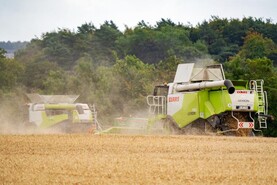The social distancing requirement for people attending mart sales has been reduced from 2m to 1m.
The move has been welcomed by Ray Doyle, ICOS livestock services’ chief executive, who said it will help to clear a continued backlog in some marts and facilitate sales.
“We are still seeing a lot of pent up demand from customers to sell cattle with many sales running at double their normal throughput level for the time of year,” said Doyle.
“As such, it is important to maximise the numbers of sellers in attendance while the timing of the change is important ahead of autumn-born weanling sales, sheep breeding sales commencing and store lamb entries growing.”
While Ballymena Livestock Mart has introduced voluntary temperature checks for those entering the mart in the last week
The social distancing spacing requirement has also been relaxed in marts in Northern Ireland.
There has been much discussion over the last week regarding Northern marts advising those attending sales to wear masks with some marts now providing hand sanitisers, masks and gloves. While Ballymena Livestock Mart has introduced voluntary temperature checks for those entering the mart in the last week.
Customers attending sales can, of course, choose to wear face masks
The requirement to wear masks is not currently mandatory under current Government guidelines and Doyle said: “Mart rings are a semi-outdoor environment where there is a regular air exchange and this does not necessitate marts to insist on the wearing of face masks.
“Customers attending sales can, of course, choose to wear face masks.
“Marts will continue to provide sanitary equipment and ensure all mandatory regulations are adhered to in order to minimise the risk of COVID-19 being contracted by mart employees and their customers.”
Many marts now anticipate that they will not experience the normal drop-off in throughput in late July and early August.
Some mart managers report they are still handling cattle that would in a normal year be traded early in the year while there are more farmers starting to present slaughter-fit and forward store cattle earlier to take advantage of the relatively solid trade.






 This is a subscriber-only article
This is a subscriber-only article










SHARING OPTIONS: